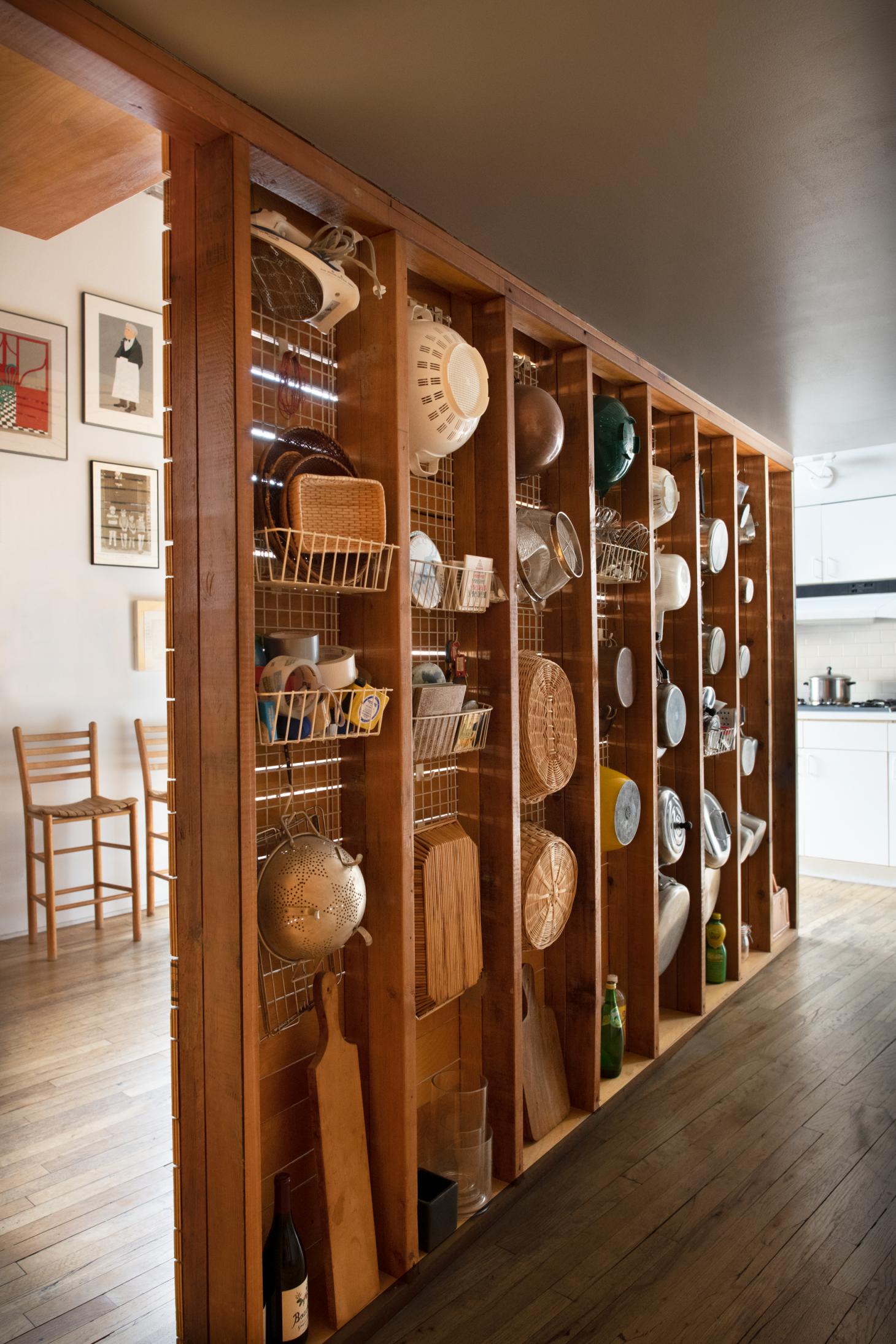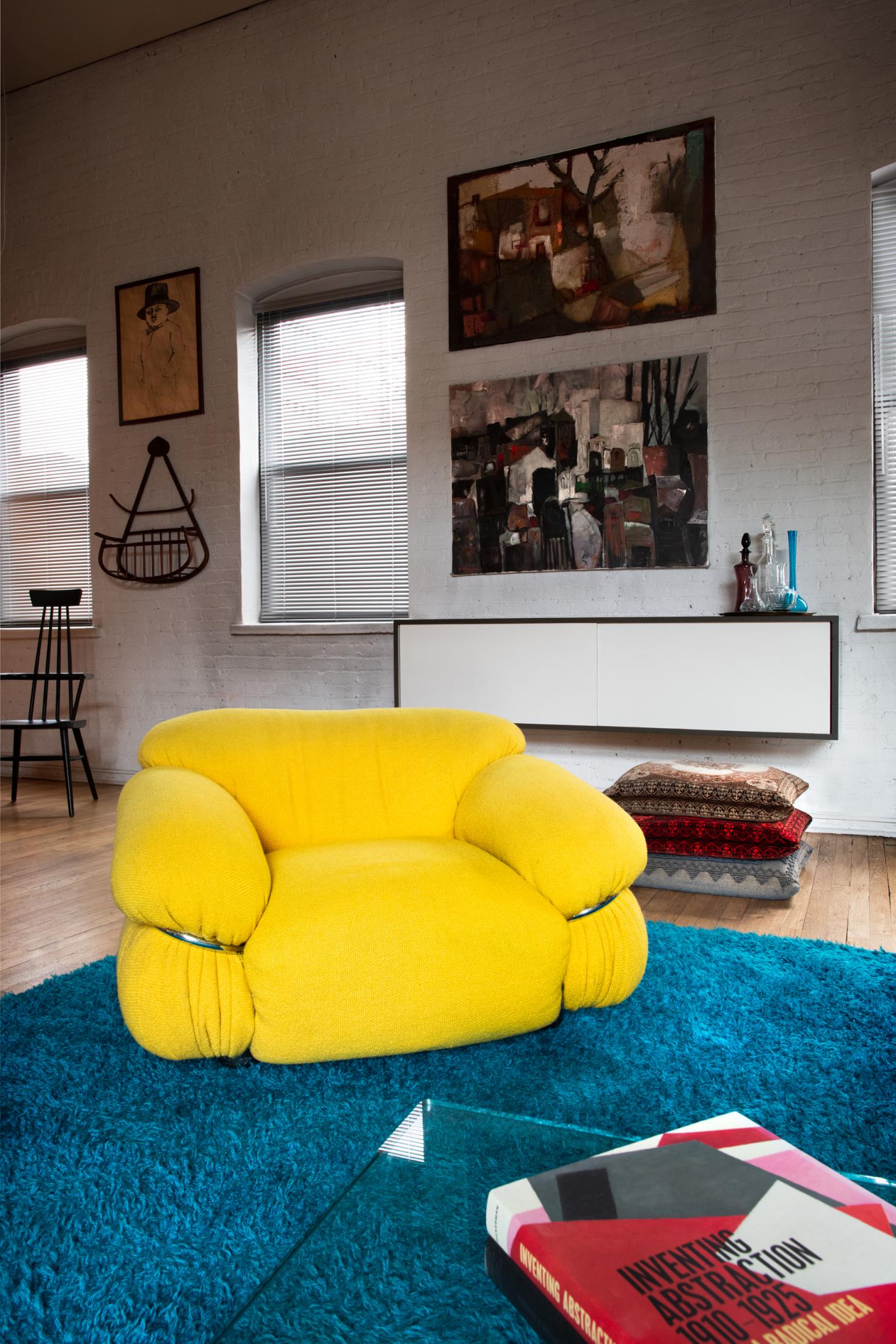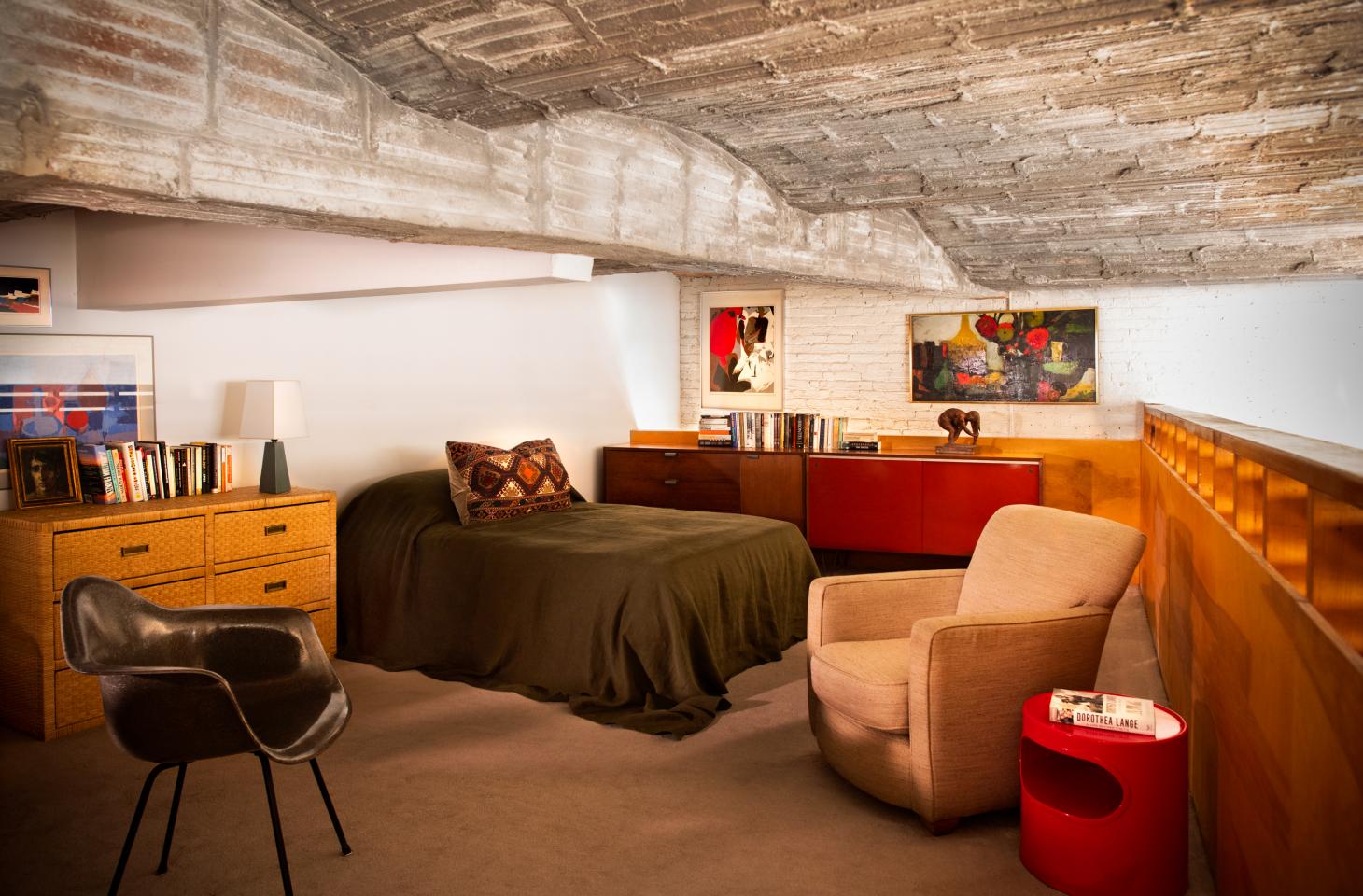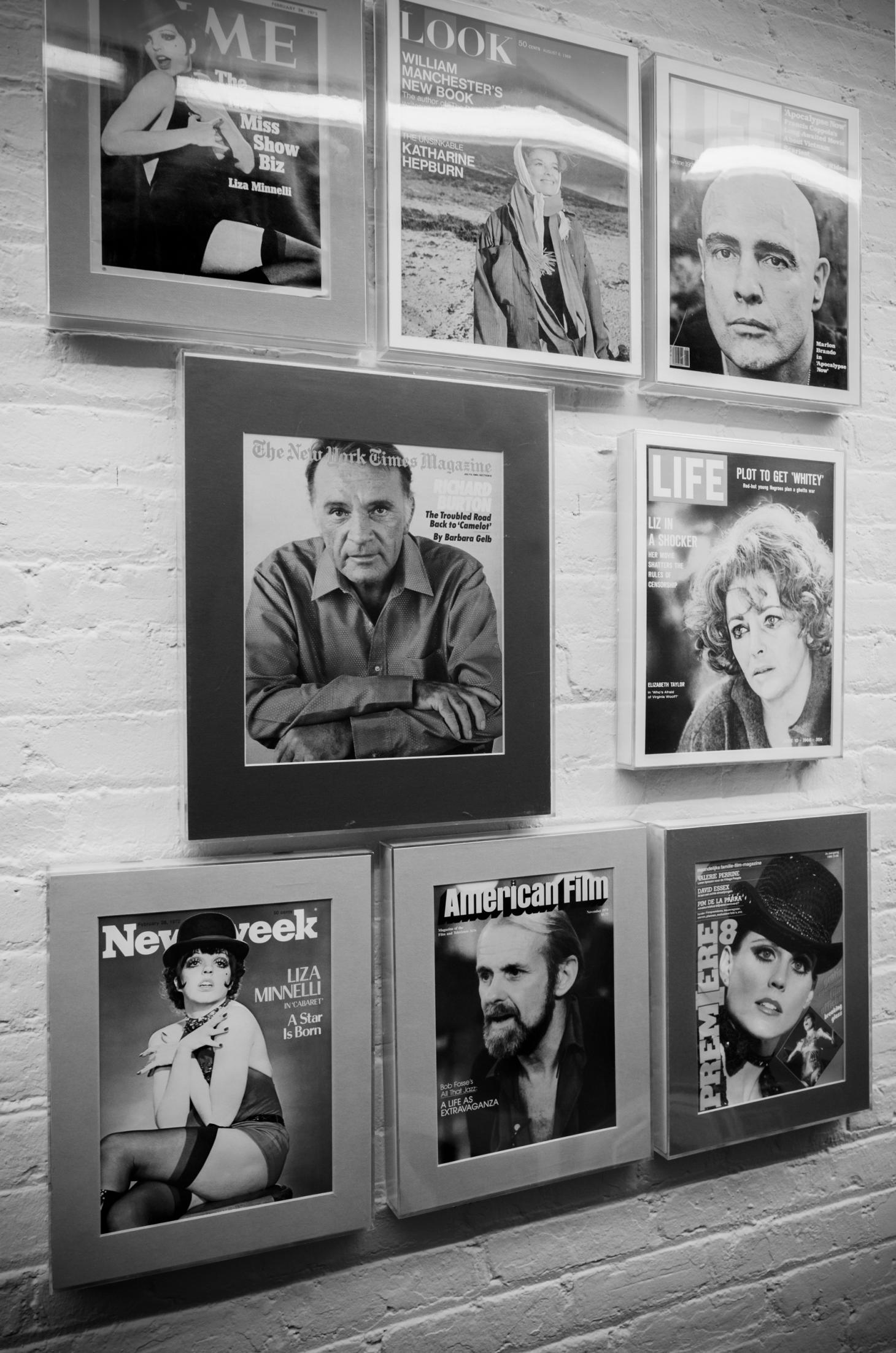Inside legendary photo agent Lee Gross’ Manhattan apartment
Lee Gross, a photo agent who pioneered the capturing of behind-the-scenes movie-set images in the 1960s, talks us through the treasures of her West Village apartment

Tree-lined Perry Street in the West Village is one of Manhattan’s most prized neighbourhoods. Despite gentrification, some things – including certain residents – have remained as they always have been over the decades. Lee Gross, a feisty and sharp nonagenarian trailblazer who was pivotal in shaping the cinematic documentation of Hollywood, has lived on the street for over three decades.
Lee Gross: a pioneering photo agent

Lee Gross at her Manhattan apartment, sitting on an Eames sofa upholstered in Optik by Verner Panton, 1969, in 001 Sun Yellow/Orange from Maharam. The painting is an early work by Gross’ good friend, Brazilian painter Luiz Coelho, painted in Quito in 1963. ’He was watching a procession in the streets from his window and having no canvas at hand he pulled a sheet off his bed and used that,’ says Gross. ’It took us years to get him to part with it but eventually he did – we loved it’
A new kind of photographers’ agent, Gross pioneered the practice of assigning prominent photographers to capture ‘behind the scenes’ (BTS) images on film sets between the 1960s and 1980s, to document the making of epics including Apocalypse Now, Cabaret, Rosemary’s Baby and Who’s Afraid of Virginia Woolf?. Lee Gross Associates, founded in 1967, worked with photographers such as Eve Arnold, Bob Willoughby and Mary Ellen Mark on ‘back of house’ imagery, which appeared on the pages of Rolling Stone, Life, Newsweek, Time and more. Gross was, you could say, an originator of content marketing, one of the first to really understand the power of BTS photography and its ability to reel in the viewer. Before her, film studios had nothing but big glossy poster imagery to sell their films. She saw the value in capturing the action as it happened.
Gross also paved the way as a working mother of two, having her children when she was 36 and 40, considerably later than was the norm, so she could focus on building her business. And all the while, Gross was creating a home for her family, a place to exalt incidental items accumulated over the years on travels with her husband, Yogi Cohen, a film and TV editor and producer, and intuitive purchases (‘My feet led me to it,’ she says of the large painting by Aboriginal artist Barbara Weir that hangs in her office, shipped back from Australia years ago). The result? A home where no one thing relates conspicuously to anything else, no singular style is pursued, and yet the enchanting ensemble of pieces lives perfectly together, as she has with it all for decades.

The Living room, featuring two original Eames fibreglass chairs ('Extraordinarily comfortable and indestructible after all these years. They were among the first pieces my husband and I ever bought’). There’s also a Charles and Ray Eames walnut chess piece, originally designed for the Time-Life building: 'I use it as a stool or table when needed.' Over the fireplace is a painting by Luiz Coelho, circa 1983. 'It reflects the sunny light of Shelter Island, his then new residence. [I am] very proud of the hanging bar beside the window, the first piece in our very first small apartment on the upper West Side of Manhattan'
‘What to me is interesting in retrospect is how one thing led to another,’ she says. She is talking about the evolution of her career, but that statement is as applicable to her personal life and building her home. It was 1990 when Gross and her husband were looking to relocate from their spacious 2,200 sq feet apartment on 277 West End Avenue, with its 12 closets and a foyer that held a piano. ‘I promised my husband when we took that apartment that when the kids were grown we would rethink, because he only ever wanted to live in the [West] Village. I never wanted to live in the Village,’ she says.
They momentarily discussed moving to the countryside, but Gross, a devout city dweller, wouldn’t have it. By 1990, their children were grown; their son Matthew Cohen was living in LA, working in the movie business (today he’s a prominent film industry advertising executive), and their daughter Rachel Cohen (now an established film and documentary producer) was attending the University of Wisconsin. Gross kept her word and the search for a new apartment began.
A West Village apartment with a view

'[The kitchen] is my favourite snack spot. What I particularly like about this spot is the simplicity – the contrast between the light wooden walls, the darker parquet floors and the white fixtures. The posters atop the cabinets add a wonderful bit of colour
‘Our two conditions were light and a view,’ recalls Gross. ‘We walk into this place and see one big space with no interior walls and three exposures,’ she says, eyes widening. They had to compromise on the view, however. ‘I kept thinking of the rooftops of Paris,’ she says, gesturing to the more mundane cityscape out the window, which, on a clear night, offers a distant glimpse of the illuminated Empire State Building. Her husband was elated when they agreed to buy the apartment. ‘We went to our home on Fire Island after we signed, and that very weekend, my husband had a heart attack and died. So the terrible irony was, here I was, where I didn’t really want to be, and he wasn’t, who all his life wanted to be here. Thirty-one years later, I got to like it. Now I can’t imagine living anywhere else.’
The couple had already brought on board the architect Peter Moore, a specialist at transforming industrial buildings into residential ones, including the famous Area nightclub on Hudson Street, which he converted into condo apartments. The Perry Street building, explains Gross, was previously a warehouse; many of the other tenants had covered over the arched rough brick ceilings, but hers is still exposed and ‘characterful’. ‘Moore’s job was to carve [the apartment] up without losing that sense of space,’ she says, gesturing upwards. The wooden mezzanine level was installed to house Gross’ bedroom – now furnished with paperback novels and a scarlet Kartell ‘Componibili’ storage unit – and second bathroom. Below, the entryway leads to a discreet office on the right, and a kitchen extension to the left, where pots, pans and utensils hang from ingenious lo-fi wall storage. The entranceway acts as a gallery, hung with large screen-printed movie posters, including a rare version for Citizen Kane, and paintings by Brazilian artist Luiz Coelho.
Receive our daily digest of inspiration, escapism and design stories from around the world direct to your inbox.

The kitchen pantry. 'This is my form and function wall, making all my cooking ware easily accessible while also enhancing the space'
All the furniture in the apartment came from their previous home, which had been designed by Virginia Whitmore Kelly (Gross rang Whitmore Kelly up in the late 1950s, having just bought her first home and spotting the designer’s name in the credits of a magazine shoot. She never expected to have her call returned, and remained a loyal client until Whitmore Kelly passed in 2001). The generously proportioned Bruno Mathsson dining table is surrounded by Josef Hoffmann chairs. At each end sit two black wood chairs she believes are Dunbar, bought from a friend who was getting rid of them. Above the dining table is suspended a pole ordinarily used to hang a boat’s sail, except Gross had it transformed into a chandelier from which to rig pendant lights. Never not resourceful and creative.
The monumental ‘Soriana’ couch by Afra and Tobia Scarpa is the first sofa Gross and her husband ever owned, although it has since been reupholstered in blush velvet. It sits invitingly along the edge of the living room; an area demarcated by a vibrant teal deep-pile carpet (a piece cut from the original carpet at West End Avenue). ‘The chairs were in my office on Madison Avenue,’ she says, gesturing to two fibreglass armchairs by Charles and Ray Eames.

The apartment’s living room. ’The yellow “Sesann” armchair [by Gianfranco Frattini] is my personal nest, puffy but solid and extraordinarily comfortable.’ The buffet on the wall was designed for Gross’ formal dining room in her and her husband’s Upper West Side apartment, while the paintings are by friend and favourite artist Luiz Coelho
Her discerning eye matches a desire for practicality. As a busy entrepreneurial woman and mother, she wanted her home to be beautiful, yet functional. Ornaments collected over the years seem to merge design with purpose, such as reimagined printing press letters framed as works of art by a friend. Under a table rests a stack of woven fruit baskets from South Africa and Mexico. A mismatched pair of tin candlesticks, sitting atop the mantlepiece, wound with wire and trinkets, were picked up on a trip with her husband to New Mexico. ‘I also loved his bowls,’ she says of the maker, pulling a stack of glazed stoneware bowls out of a kitchen cupboard.

The entry hall with a ‘Swan’ sofa by Arne Jacobsen (the only new piece of furniture bought for the apartment). 'We wanted an open, airy feeling, so omitted risers in the staircase. Light flows through the entire apartment'
Gross spends less time in the kitchen than she once did, when she would host dinner parties with her husband in their previous apartments, but her thumbprint is as apparent there as anywhere else. A miniature pool table with a glass top cover, piled high with magazines, paper files and post provides additional counter space. The wall behind has a salon-style hang including a 1983 Bruce Davidson poster and a 1965 photograph of Gross in conversation with Richard Burton on the set of Who’s Afraid of Virginia Woolf?. ‘He couldn't believe he met an agent who actually read books,’ she jokes. By this stage, her career had segued into film publicity, and she was working on films including Cabaret, where she met director Bob Fosse, who requested her to do publicity for All That Jazz. It was then Gross met actress and dancer Ann Reinking, whom she subsequently represented until Reinking passed away in December 2020.
Although now in her tenth decade, the industrious journalism graduate from Hunter College is as busy as ever, working as a freelance photo editor, photo researcher and photo archivist on books and special projects. ‘One day, I was walking down the street with Ann Reinking and Gwen Verdon. I'm walking sort of behind them, and I'm thinking, “What is this Jewish girl from the Bronx doing walking down Broadway with these legends?”’ Life, it turns out, can be a cabaret.

The bedroom loft. Says Gross: ’The loft, originally built in the 1920s, was designed by an architect named Restivo; its ceiling is similar to the one in the oyster restaurant in Grand Central Station, also designed by Restivo.’ The two chests on the back wall are George Nelson designs for Herman Miller, while the paintings and posters are by Luiz Coelho. The bronze sculpture on the chest is a woman washing her hair, by Bruno Luchessi, which Gross and her husband bought in 1960. ’It was a complete indulgence and continues to give me pleasure to this day.’

The entry hall, with a wall of miscellaneous posters and prints. 'My personal favourite is the blow-up of The New Yorker cover from 15 May 1925. The etching beside The New Yorker cover is by Aubrey Schwartz.'

A photograph of Gross with Richard Burton. ’Photographer Bob Willoughby snapped this shot of me talking with Richard Burton on the set of Who’s Afraid of Virginia Woolf?, 1965. And Bob quoted Burton in the bubble saying, “Someone like you could never be an agent.” It seemed I had accidentally impressed Mr Burton because I happened to have read a novel by a Welsh writer he admired, Gwyn Thomas.’

In the hallway outside Gross’ apartment hangs an assemblage of historic Lee Gross Associates magazine covers featuring Hollywood cinematic icons.
Tilly is a British writer, editor and digital consultant based in New York, covering luxury fashion, jewellery, design, culture, art, travel, wellness and more. An alumna of Central Saint Martins, she is Contributing Editor for Wallpaper* and has interviewed a cross section of design legends including Sir David Adjaye, Samuel Ross, Pamela Shamshiri and Piet Oudolf for the magazine.
-
 Inside Christian de Portzamparc’s showstopping House of Dior Beijing: ‘sculptural, structural, alive’
Inside Christian de Portzamparc’s showstopping House of Dior Beijing: ‘sculptural, structural, alive’Daven Wu travels to Beijing to discover Dior’s dramatic new store, a vast temple to fashion that translates haute couture into architectural form
-
 A music player for the mindful, Sleevenote shuns streaming in favour of focused listening
A music player for the mindful, Sleevenote shuns streaming in favour of focused listeningDevised by musician Tom Vek, Sleevenote is a new music player that places artist intent and the lost art of record collecting at the forefront of the experience
-
 Take a tour of the 'architectural kingdom' of Japan
Take a tour of the 'architectural kingdom' of JapanJapan's Seto Inland Sea offers some of the finest architecture in the country – we tour its rich selection of contemporary buildings by some of the industry's biggest names